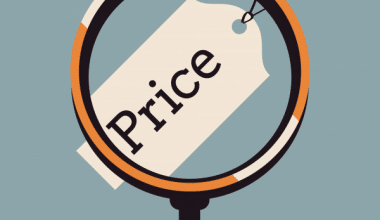When creating a new product or working to enhance an existing one, it’s important to keep the end-users in mind from the very beginning. To create first-rate goods and services for your target market, you must be intimately familiar with their demographics, wants, and pain points. UX research enables you to take your customers’ perspectives into account. The heart of user experience research is discovering user behavior, needs, and motivations for designing valuable goods and services. Doing user experience research will help you provide superior solutions for your users by revealing their true pain points. This guide focuses on the fundamentals of user experience (UX) research, the methods, internship, certificate, and how to become a researcher with no experience.
What is User Experience Research?
User experience research (UX research) focuses on discovering what potential consumers of a system or product need and want, then putting those revelations to use to improve the design process for goods, services, or perhaps software. In accordance with the area of focus, UX research can take many different forms. UX research, for instance, may entail evaluating brand designs as well as messaging prior to product launches for marketing departments while also verifying hypotheses and prototypes with product development teams.
UX researchers carry out UX research by observing users and examining how they carry out specific tasks in order to understand their motivations, behaviors, and demands. Additionally, UX testing sessions, remote user observation utilizing digital technologies, questionnaires to get user feedback, and other techniques can be used in UX research.
All users create unique mental models because everyone sees the world differently, so developers must take user behavior into account while designing their products.
Types of UX Research
There are basically two types of user experience research;
#1. Qualitative Research
Here, you try to gain a thorough knowledge of why users behave as they do (for example, why they ignore a call to action or feel the way they do about a website) using techniques like interviews and ethnographic field research. For instance, you could conduct user interviews with a small sample of users and ask them open-ended questions to learn more about their unique exercise routines. Usability testing is another component of qualitative research, and you can use it to track user reactions to stress, for example. However, when conducting qualitative research, it is advisable to approach it carefully. There is a chance that your personal beliefs will sway the results because it involves gathering non-numerical data (such as thoughts and reasons).
#2. Quantitative Research
With this approach, you collect quantifiable information regarding what users do by employing more systematic methods (such as surveys and analytics) to evaluate the hypotheses drawn from qualitative research. You may, for instance, ask visitors to complete an online poll on their workout routines (such as, “How many hours do you devote to working out every week?”). As such, you can identify trends among a large user base using this data.
Furthermore, you’ll obtain a more statistically accurate technique for evaluating the general population of target consumers if you have a sizable sample of representative participants in the experiment. With good study design, you can collect objective data that is unaffected by your involvement, personality, or assumptions, regardless of the method. Quantitative data, on their own, cannot, however, provide deeper human insights.
User Experience Research Methods
As a UX designer, you’ll be responsible for determining which research methods are most useful for addressing specific concerns. You can use a number of methods from the UX research toolkit to learn more about your customers.
#1. Card Sorting
Participants in the study classify issues into categories that make the most logical sense to them while giving these categories names. With this knowledge, designers may produce more user-friendly and intuitive apps and websites.
#2. Usability Testing
You watch as participants attempt to finish a task with a product. This enables you to evaluate the efficiency with which users perform tasks, the issues they experience, and their level of satisfaction throughout the process.
#3. User Interviews
Face-to-face interviews can be conducted online or in person, and they provide a quick and simple approach to learning what a user expects from a future product or gathering qualitative information about an existing product. Focus groups are frequently used to refer to these interviews whenever more than one person is being interviewed at once.
#4. Surveys and Questionnaires
A survey or questionnaire can be created to produce both qualitative and quantitative data. You may monitor a product’s improvement over the course of its development and lifecycle by utilizing the same questions and running several surveys.
#5. A/B Testing
This compares two iterations of a product to find out which the intended market prefers. This is possible with a live product by displaying distinct web pages to various visitors or sending two different mailings to various recipient lists.
#6. Contextual Observation
Instead of conducting user interviews in a lab setting, you will instead study users in their normal environments—possibly at home or at work—while posing questions in order to comprehend how and why people behave in the way they do.
#7. First Click Testing
This kind of user testing looks at the first thing a target user clicks on when attempting to complete an activity on a site or app interface. On a live website, a prototype, or a wireframe, one can conduct a first-click test.
#8. Diary Studies
Target users record their daily actions over a predetermined (often lengthy) period of time in a log. This enlightens you about actions and events in the real world. You might discover what time of day users regularly interact with your product or perhaps how frequently they make use of it during a day, a week, or a month.
What is an Example of User Experience Research?
Using the Participatory Design;
- In participatory design, participants are tasked with creating their ideal iteration of a given resource, good, or service. This enables UX researchers to inquire in a more in-depth fashion as to the rationale behind design decisions. When several people make the same decisions, trends can be quickly identified and implemented.
Example
- You could solicit feedback by inquiring about how respondents would alter your website. While reactions will vary, you may discover that some users have rearranged the layout of your site to make the navigation more visible, or have shifted the checkout from the left to the right side of the page.
What Are the Seven Aspects of User Experience?
The seven basic elements of the user experience are;
- Usefulness
- Desirability
- Accessibility
- Credibility
- Findability
- Usability, and
- Value
These big groups, however, include a lot of lesser components. The user’s perception of the desirability of an offering, for instance, can include factors like aesthetics, branding, and price tactics.
User Experience Research Internship
User experience researchers are renowned for entering the field in unusual and occasionally complicated ways. While some migrate directly from academics, others do so from related fields like product management or take the position to help their team cover research shortages.
A UX research internship is a terrific stepping stone into your first full-time UXR employment, regardless of how you became interested in the field—by chance, out of need, or on purpose.
What Does a User Research Internship Do?
It’s critical to comprehend the qualifications, duties, and experience you’ll be required to have prior to starting to apply for jobs.
The requirements for each user experience internship will vary slightly, so carefully read the description before applying to make sure your résumé and cover letter are in line. Generally, your duties as a UXR intern will be as follows:
- Knowledge of and proficiency in a wide range of qualitative and quantitative research techniques.
- Collaborating cross-functionally alongside product managers, developers, and other pertinent parties.
- Generating user insights that enhance the creation and design of products.
- Conducting user research to comprehend the wants, needs, and actions of your intended market.
- Synthesizing and sharing research findings with the appropriate teams.
How can I secure an internship in UX research?
- Create a portfolio
- Try to network.
- Start your application early.
- Apply even if you’re not a perfect fit.
- Seek a mentor.
- Get ready for typical interview questions.
- Do some follow-up.
- Don’t get discouraged.
How to Become a UX Researcher With No Experience
A career in UX research provides a chance to put your imagination to work while also getting to play a role in creating something from scratch. Those with strong visualizing skills will greatly benefit, as will those who can translate their unfettered imagination into tangible drawings and diagrams. The chance to work on meaningful technology is too good to pass up. In addition, a UX researcher can often accomplish their work from home with no experience.
We’d be remiss if we didn’t also point out that salaries for UX researchers are typically competitive. A UX researcher with no experience in the United States makes an average of $89k annually. Even at the entry-level, it is possible to make $60,000 a year or more. However, there are a few things to keep in mind if you want to become a UX researcher with no experience.
Becoming a UX researcher
There is basically no one true way to become a UX researcher. There is a wide range of experience represented among those who enter the profession of user experience research. Nevertheless, the fact that you can become a UX researcher with no prior experience is a fact that cannot be disputed. If you have a background in fields like sociology, ethnography, psychology, marketing, communications, design, or technology, you may find it easy to break into the field of user experience research.
Of course, some UX researchers have succeeded while having studied none of the aforementioned areas. UX research is an open field that requires no formal education or experience. You can be from any background, so long as you know how people and the design process function. Having said that, applying for new employment while holding at least one of the aforementioned qualifications is a huge advantage.
#1. Developments in Artificial Intelligence
Some have voiced concern that AI could one day handle a UX researcher’s job so well that it would be redundant to hire a human. Technology advancements, such as ChatGPT and Dall.E, are rapidly altering many people’s perspectives on the future of artificial intelligence and which professions will become obsolete.
The good news is that UX researchers are probably not a passing fad. No machine will ever be able to comprehend human beings on the same level as humans. In addition, AI is currently lacking creativity and cannot develop anything original at this time (though it is debatable if humans could ever create something truly original either). It has been claimed by UXDesign that the present AI “lacks a core tenet of human intelligence; ingenuity and creativity.”
Research, Research, and Yet More Research
The majority of a UX researcher’s time is spent on research. UX researchers will spend a lot of time investigating (the name kind of gives it away). If you’re good at this sort of thing, user experience research could be the perfect field for you.
#2. Networking with Others
With no prior experience, networking is your best bet for breaking into the field of UX research and becoming a researcher. Most people get hired regardless of their qualifications. Who you know or connect with really matters. For instance, you can connect with other individuals who are interested in user experience research. This is a fantastic opportunity to network with others who share your interests and to get the knowledge and experience you’ll need to succeed in a UX research position.
In addition to Facebook and Discord, there are numerous Slack channels you can join. You can also join UX research communities on Reddit. If you’re a UX researcher with no experience, you may learn a lot by following other researchers on LinkedIn, reading their posts, and modeling your own work after theirs.
#3. UX Research Tools
Although it is feasible to break into the field of user experience research with little to no expertise, it is important to recognize that a UX researcher can benefit from a set of specialized tools.
#4. Writing a Resume
Focusing your resume in the right way can make you a competitive candidate even if you don’t have degrees or expertise in the preferred fields.
Highlight everything you can that has to do with user experience and design. Don’t waste time worrying about things you’re not good at or haven’t mastered yet; instead, concentrate on your strengths. Recruiters read through a lot of resumes every day, so it’s important to make an impression with yours.
During the application process, UX research recruiters will often give candidates tasks to complete. If you manage to do it perfectly, your reputation will soar. If you can surpass the competition here, their credentials won’t matter at all.
What Does a UX Researcher Do?
- Carrying out user research
- Working along with designers
- Analyzing data.
- Making and evaluating prototypes
- Defining and ranking the needs and objectives of the user
- Producing and delivering reports and advice to stakeholders.
- Keeping up with the most recent UX research techniques
What Are the 4 Ds of UX?
The four basic phases are;
- Discover
- Design
- Develop
- Deliver
Bottom Line
User experience research is a vital step in the human-centered design process and in developing products that satisfy user needs and add value for consumers.
The necessity for UX research will increase as more businesses prioritize their customers’ requirements. To facilitate this expansion, the business must learn how to scale user research. To enable everyone on the team to learn, the role of UX research will be expanded. The usage of remote research tools, the development of AI, and the formation of new positions like “research operations” are further trends that will influence the direction of UX research in the future.
Related Articles
- UX DESIGNER: Job Description, Skills, Courses, and Salary
- WRITING PORTFOLIO: Ultimate Guide to What to Include.
- MARKET RESEARCH METHODS: Top 10 Effective Research Methods For Any Business.
- WHAT IS QUALITATIVE DATA: Definition, Examples, Analysis & Difference






